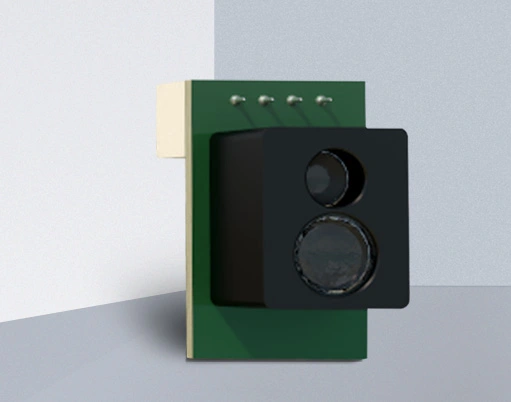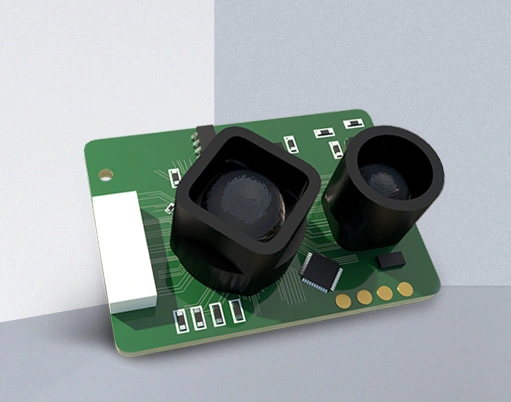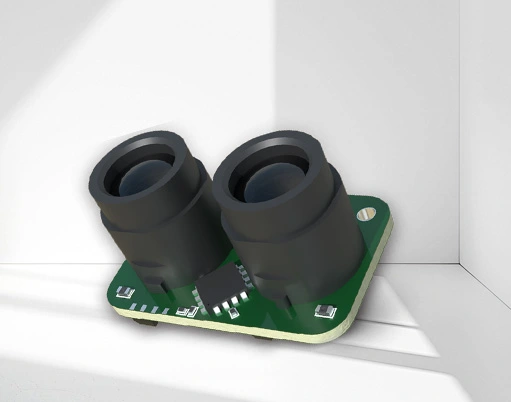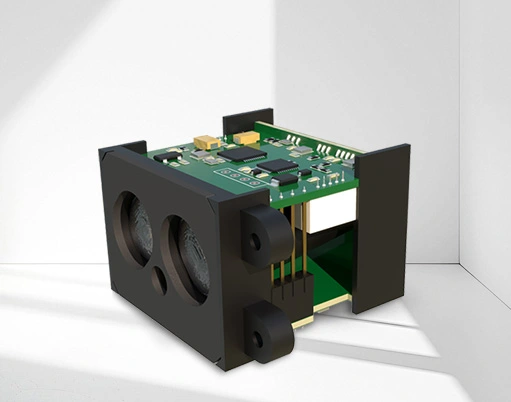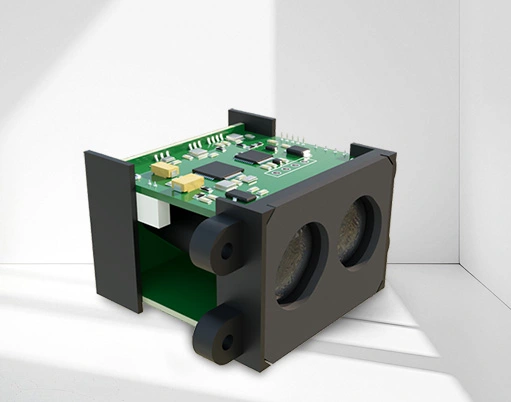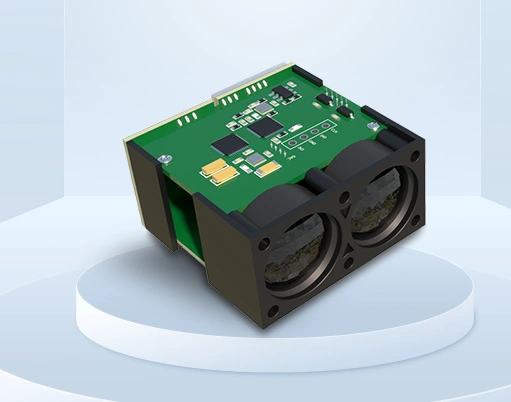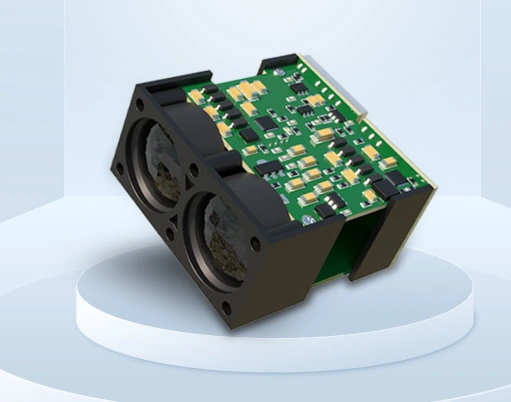
The industrial safety distance warning system is an important technical means to ensure the safety of personnel, equipment, and facilities in industrial production sites. By monitoring the position relationship of targets such as personnel, vehicles, and machinery in real time, when the distance is less than the preset safety threshold, it automatically triggers an alarm (such as sound and light, voice prompts) or links the equipment to stop, thereby preventing accidents such as collisions, crushing, and mechanical injuries.
1、 Core application scenarios
1. Human machine collaboration area in the workshop
Scene DescriptionMechanical arms, CNC machine tools, AGVs and other equipment should be operated in the same area as operators (such as automotive welding workshops, electronic assembly lines) to avoid personnel accidentally entering the equipment's movement radius.
system functionsMonitor the real-time distance between personnel and equipment, and issue a warning when personnel enter the "alert zone" (such as 1-3 meters away from the robotic arm); When entering the "danger zone" (such as within 0.5 meters of the robotic arm), the equipment is forced to pause operation.
2. Driving route of vehicles in the factory area
Scene DescriptionForklifts, trucks, tractors, etc. should avoid collisions with pedestrians, other vehicles, or fixed facilities (such as shelves and pillars) when driving on factory roads or in warehouses.
system functionsInstall sensors at the front and rear of the vehicle to monitor the distance between pedestrians or obstacles ahead (such as warning distance of 5-10 meters, emergency braking distance of 2-3 meters), and use UWB or RFID technology to identify the relative position between the vehicle and pedestrians, achieving bidirectional warning (vehicle reminds pedestrians, pedestrians hold terminals to remind vehicles).
3. High risk equipment operation area
Scene DescriptionWhen operating lifting machinery (overhead cranes, gantry cranes), stamping equipment, high-voltage equipment, etc., non operators must be strictly restricted from entering the safe range (such as under the crane arm and within 1 meter of the high-voltage cabinet).
system functionsBy using laser scanning or radar to demarcate a virtual "safety fence", once someone or object breaks through the fence, an audible and visual alarm will be triggered immediately, and the control console will be notified synchronously. If necessary, the equipment power will be cut off.
4. Storage and logistics sorting area
Scene DescriptionIn an automated three-dimensional warehouse, the stacker crane, conveyor belt, and manual sorting area are adjacent to each other, and it is necessary to prevent personnel from being injured by equipment clamps or goods from falling and smashing.
system functionsInstall sensors on both sides of the equipment's operating track to monitor the lateral distance between personnel and the equipment; Install a distance measuring device at the end of the conveyor belt to prevent personnel from reaching into the operating area.
2、 System composition and technical principles
1. Core components
perception layerResponsible for collecting distance and location information, commonly used equipment includes:
Lidar (Laser Radar)Generate a three-dimensional point cloud of the surrounding environment through laser scanning, accurately identify the target position and contour, suitable for monitoring large areas (such as workshops and factories), with a ranging range of 0.1-200 meters and an accuracy of ± 2cm.
millimeter wave radarStrong resistance to interference from dust, fog, rain, etc., suitable for outdoor or harsh environments, can simultaneously monitor multiple moving targets (such as vehicles and pedestrians), with a range of 1-100 meters.
Infrared/Ultrasonic SensorsLow cost, suitable for short distance (0.5-5 meters) static monitoring (such as next to equipment protective barriers), but susceptible to light or temperature effects.
UWB positioning tagUsing ultra wideband technology to achieve centimeter level positioning of personnel/equipment (with an accuracy of ± 10cm), in conjunction with positioning base stations to delineate safe areas, suitable for scenarios that require precise tracking (such as mines and chemical workshops).
Processing Layer: It is composed of edge computing gateway or industrial PLC, receives sensing layer data, and judges whether to trigger early warning through algorithms (such as geometric distance calculation and dynamic trajectory prediction). The response time is usually ≤ 100ms.
Execution LayerIncluding alarm devices (sound and light alarms, voice players), linkage devices (equipment emergency stop switches, barrier gates, indicator lights), and backend management systems (real-time display of warning information, historical data traceability).
2. Warning logic design
Multi level warning mechanismSet the three-level threshold of "safe zone alert zone dangerous zone" based on distance, for example:
Safe zone: distance>5 meters, no warning;
Warning zone: 3-5 meters, emitting yellow light and low-frequency alarm sound;
Dangerous zone:<3 meters, red light+high-frequency alarm sound+equipment deceleration/shutdown.
Dynamically adjust thresholdFor different devices (such as high-speed lathes vs. low-speed AGVs) and different scenarios (day time personnel density vs. night time inspections), the safety distance parameters can be remotely modified through the system.
3、 Technical advantages and implementation points
1. Advantages compared to traditional security measures
initiativeReplace passive protection (such as guardrails and warning signs), provide early warning of potential risks, and reduce the probability of accidents.
flexibilityCan adapt to dynamic changes in the work environment (such as temporarily adjusting equipment positions, adding new work areas), without the need for frequent modification of physical facilities.
TraceabilityThe system records all warning events (time, location, involved targets) for accident analysis and process optimization.
2. Implementation precautions
Environmental adaptabilityIn scenes with high dust, strong light, or severe electromagnetic interference (such as welding workshops, steel plants), laser radar or millimeter wave radar should be preferred, and infrared sensors should be avoided.
Redundant designKey areas adopt multi-sensor cross validation (such as laser+radar dual monitoring) to prevent missed reports caused by single device failures.
human-machine cooperationThe warning system needs to be combined with personnel training to avoid neglecting safety operating procedures due to excessive reliance on technology (such as setting additional warnings for sensor blind spots).
4、 Typical application cases
Automobile assembly workshopInstall laser radar on both sides of the AGV's driving route. When personnel are detected to be less than 1.5 meters away from the AGV, the AGV automatically decelerates to 30% of its original speed; Stop immediately when the distance is less than 0.5 meters and sound a voice prompt saying 'Please be careful to avoid'.
chemical industrial parkDeploy UWB positioning system around the hazardous chemical storage tank area. When unauthorized personnel enter a 50 meter range, the control panel will sound an alarm and display the real-time location of the personnel; When entering a 10 meter range, the linked access control system locks the entrance and notifies security personnel.
The industrial safety distance warning system, through a closed-loop management of "perception judgment response", transforms traditional "post-processing" into "pre prevention". It is one of the core technologies for intelligent safety production in the context of Industry 4.0, and plays an irreplaceable role in high-risk and highly automated production scenarios.

























